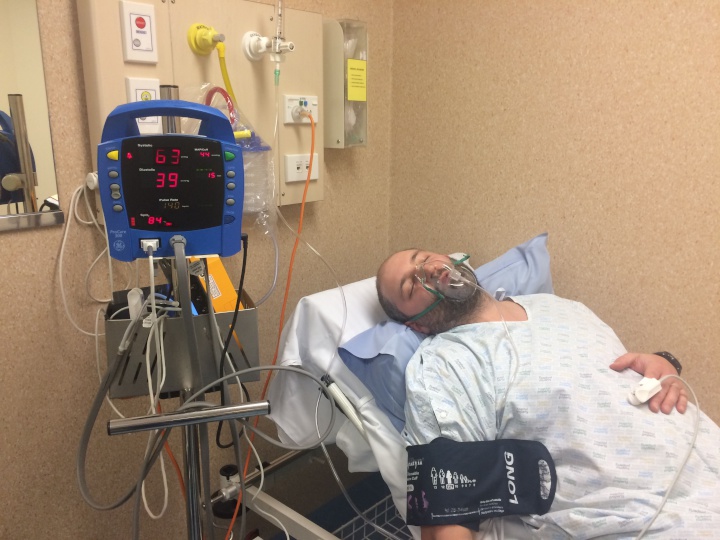Realistic, low-cost medical simulator developed by Christchurch team

Simulations in healthcare are
great for training, but can be expensive.
A team headed by Christchurch Hospital anaesthetic specialist Dr Daniel Hartwell has designed a low-cost, highly-realistic simulator that plugs in to everyday medical equipment.
Previous medical simulation systems tended to be very expensive and/or unable to be transported easily.
“Nurses and technicians are all part of the same team, and so everyone needs access to the same system,” Daniel says.
Most systems use mock monitors, designed to look like the real thing.
“The issue with that the mock monitor and how it behaves is not the same as the ones actually used, so their value for training is limited,” Daniel says.
Biomedical Engineer Michael Sheedy from the Canterbury District Health Board (Canterbury DHB) Medical Physics & Bioengineering Department helped Daniel develop a system that would use the same equipment clinical staff used every day.
“You wouldn’t train a pilot in an Airbus A380 and then expect them to fly a 747,” Michael says.
At that stage, Daniel had been using calibration devices to run simulations of his own design. These devices are used to check equipment, and can be used to make certain displays appear on medical monitors.
“Dan was like a DJ, controlling all of these pieces of kit to control the monitors,” Michael says.
Throughout 2016 and 2017, the pair developed software to allow someone to control the calibration device wirelessly from a tablet computer. They envision creating a series of modules to expand the usefulness of the simulator.
The first module, called RESPIRECO2, is a device that generates carbon dioxide to imitate different human breathing patterns, which show up on real monitors.
Daniel has conducted simulations for anaesthetics teams using partial and full mannequins, and actors. He has tested the simulator in surgical theatres, the intensive care unit, ambulances, and a medical transport helicopter.
The simulator is also used for training in Christchurch Hospital’s Emergency Department, and futher testing is being carried out at different hospitals around New Zealand and in Australia.
The Hartwell Simulator has been developed in partnership with Canterbury DHB as part of a focus on using technology to improve healthcare for patients and staff.
ENDS




 Whanganui Regional Museum: Historic Wedding Dress Unveiled, A Piece Of Marton’s Heritage
Whanganui Regional Museum: Historic Wedding Dress Unveiled, A Piece Of Marton’s Heritage Donovan Ryan: Local Runner Takes Out Frontrunner Christchurch Marathon
Donovan Ryan: Local Runner Takes Out Frontrunner Christchurch Marathon University of Auckland: Tributes Flow For Much Loved Pacific Leader Melegalenu’u Ah Sam
University of Auckland: Tributes Flow For Much Loved Pacific Leader Melegalenu’u Ah Sam NZEI: Ministry Of Education Cuts Will Disproportionately Affect Pasifika
NZEI: Ministry Of Education Cuts Will Disproportionately Affect Pasifika Day One Hapai te Haeata: Call To Action For Young Filmmakers Against The Backdrop Of Funding Cuts
Day One Hapai te Haeata: Call To Action For Young Filmmakers Against The Backdrop Of Funding Cuts Toyota New Zealand: Three Races For Top Three To Decide TR86 Title
Toyota New Zealand: Three Races For Top Three To Decide TR86 Title